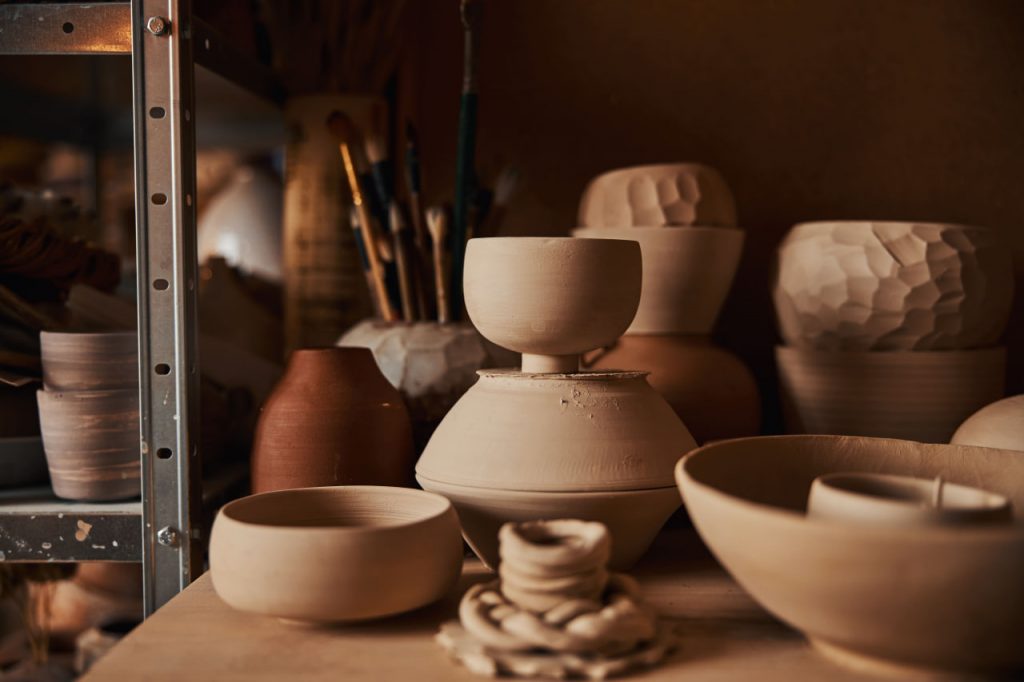Pottery firing is the critical step that transforms raw clay into durable, finished ceramic pieces. Without firing, clay would remain soft and break easily. Understanding the different types of kilns, firing methods, and temperatures can make a huge difference in the final result of your pottery work. Whether you’re a beginner or a seasoned potter, mastering the firing process is essential to creating pieces that last.
Types of Kilns: Choosing the Right One for Your Work
Choosing the right kiln for your pottery depends on several factors, including the type of clay you use, the style of your work, and your available space. Here are a few of the most common kiln types:
- Electric Kiln: Ideal for beginners and hobbyists, electric kilns are easy to use and relatively affordable. They are perfect for low to mid-range firings and can accommodate a variety of pottery projects.
- Gas Kiln: These kilns offer more control over the firing process and are often preferred by professional potters. Gas kilns provide the possibility of firing at higher temperatures and achieving unique effects, such as reduction firing for glaze effects.
- Wood-Fired Kiln: This traditional type of kiln uses wood as fuel, creating a natural ash glaze and unique surface textures on pottery. Wood firing requires more effort, patience, and expertise, but the results can be stunning and one-of-a-kind.
Firing Methods: Exploring the Various Pottery Firing Techniques
The method you use to fire your pottery greatly impacts the outcome of your pieces. There are a few common pottery firing techniques that produce different results:
- Bisque Firing: This is the first firing of raw clay, turning it from a soft, malleable form into a hardened structure. It’s typically done at a lower temperature and prepares the pottery for glazing.
- Glaze Firing: After bisque firing, the pottery is coated with a glaze and fired again at a higher temperature. This step gives your pottery a smooth, glossy finish and enhances its color and texture.
- Raku Firing: A rapid firing process that creates dramatic and unpredictable effects on the surface of the pottery. Pottery is fired to a high temperature and then rapidly cooled, creating unique crackling and color patterns.
- Pit Firing: A low-tech, ancient firing method where pottery is placed in a pit with combustible materials and then fired. This method produces organic, rustic finishes and is often used for decorative pieces.
Firing Temperature: Understanding the Heat Range for Different Clays and Glazes
Pottery firing temperatures vary depending on the type of clay and glaze used. The temperature range is typically divided into three categories:
- Low-Fire (Cone 04 to Cone 01): This range is suitable for earthenware and some low-fire stoneware clays. The firing temperature is around 1,900°F to 2,100°F (1,040°C to 1,150°C).
- Mid-Range (Cone 5 to Cone 6): Often used for stoneware and porcelain clays, this range is between 2,100°F to 2,250°F (1,150°C to 1,230°C).
- High-Fire (Cone 9 to Cone 10): Suitable for durable, high-quality stoneware and porcelain, firing temperatures for this range can reach up to 2,400°F (1,315°C).
Finishing Touches: Post-Firing Glazing and Decoration
After firing, pottery can be further decorated using a variety of techniques such as adding glaze, painting with underglazes, or using decals. The finishing touches are essential for creating unique, personalized pieces that reflect your individual style. Post-firing techniques like burnishing, polishing, or adding metallic accents can take your pottery to the next level.
Conclusion: Mastering the Firing Process for Perfect Pottery
Understanding the firing process is crucial for any potter looking to perfect their craft. By choosing the right kiln, experimenting with different firing methods, and knowing your clay’s firing temperature, you can unlock a world of creative possibilities. Whether you’re creating functional pottery or one-of-a-kind decorative pieces, mastering firing techniques will ensure that your pottery lasts for years and continues to impress.

